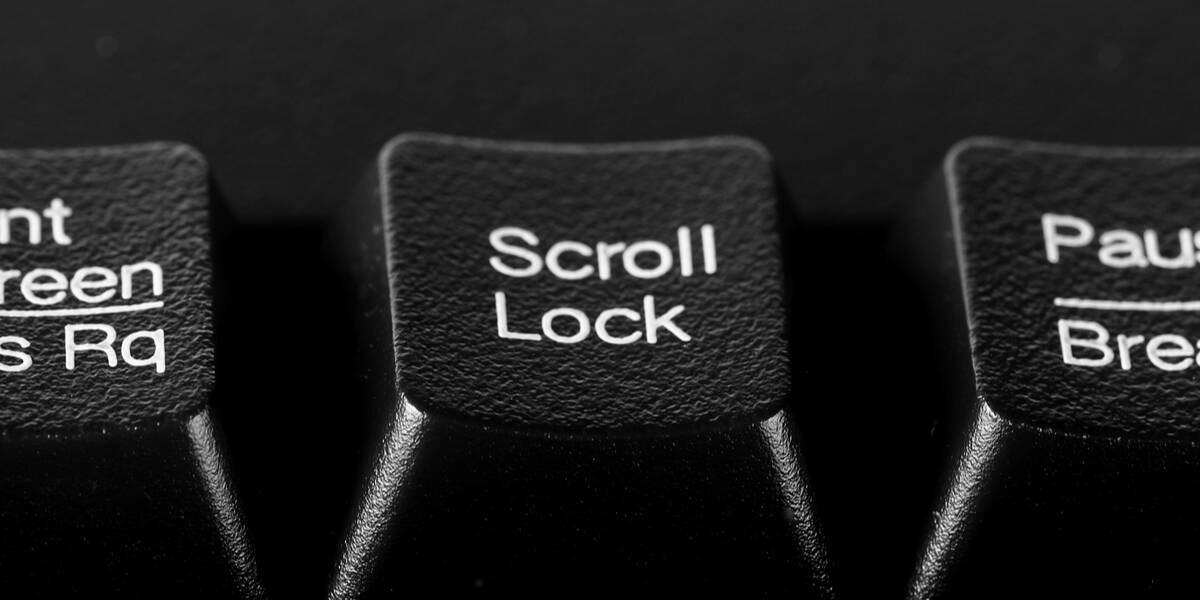The Return Of The Turbo Button: New Intel Hotness Causes An Old Friend To Reappear

Do you remember the days before desktop processors needed heatsinks? Are you wearied by the constant churn of new computer tech that never seems to make things easier?
Intel has good news for you: it's bringing back an old friend: the turbo button.
Better still, you won't need any new hardware, because it's repurposing something you already have but never use: your Scroll Lock key.
Grey-haired techies may remember that the turbo button didn't do what it said on the tin. It didn't magically make a sluggish PC faster, but rather the reverse: it slowed it down to make older programs – games, mainly, that weren't designed for 33 screaming megahertz of raw 486 power – playable again. Well, it's games to blame again now that Intel's 12th generation of Core processors is here.
Chipzilla emitted a troubleshooting bulletin recommending the use of Scroll Lock as a workaround yesterday, prompting more than one person to comment that this made Scroll Lock the new turbo button.
(If you have lost track of the generations, we don't blame you. So far, they were: Nehalem; Sandy Bridge; Ivy Bridge; Haswell; Broadwell; Skylake; Kaby Lake; Coffee, Amber, Whiskey and Cannon Lake; Cascade, Ice and Comet Lake; Tiger and Rocket Lake. And now, Alder Lake. Clear as Shenzhen lake-bottom mud.)
Naturally Intel is saying its latest PC silicon is the fastest thing ever, but the big change in this generation is really about power management.
Alder Lake is Intel's second go at what it initially called "hybrid technology" CPUs. Alder Lake chips have a blend of two types of processor core: some high-performance but electricity-hungry, and some Atom-style – lower-performance but frugal with the juice.
This style of design was pioneered a decade ago by Arm, which called it big.LITTLE, much to the chagrin of The Reg's correspondent. It's useful for smartphones and tablets alike – so long as the OS knows about it, it can shuffle tasks around between performance or efficiency cores depending on available battery life, cooling, user demands and so on. It's also good for marketroids, who can claim that a chip with, say, three of each type is a "six-core" device.
- BOFH: Thermo-electric funeral
- 'We will not rest until the periodic table is exhausted' says Intel CEO on quest to keep Moore's Law alive
- Remember the turbo button on PCs? New AWS instance has one for CPU burst
- Thrustmaster unveils Wii peripherals kit
Apple's new Arm-based chips have their own versions of the same tech, naturally, and Apple has been rather cunning about how it spreads the load.
The problem is that this stuff is new to PCs. PCs with low-power Atom chippery arrived in 2008 for netbooks and so on. The processors were sold on being cheap, small, and having decent battery life – not on their rapidity, because they didn't have any. Now Intel's mixing together low-end Atom-class cores and high-performance normal cores in the same microprocessor package to balance power usage and oomph, which is most useful in laptops and tablets.
But sometimes customers don't know what they have, so performance-hungry programs (read: games) sometimes have to check the spec of the PC they're installed on and tell the poor punter that their PC isn't fast enough. Which is a problem if the hapless app finds a shiny new 12th-gen processor that looks like a bunch of Atom-class cores – it complains that this new-fastest-ever-chip isn't quick enough.
Enter the 21st century turbo button. All the lucky new owner of one of these boxes has to do is go into its firmware, enable the Legacy Game Compatibility Mode option, reboot, and then, when you press Scroll Lock, your PC will gently anesthetize its efficiency cores. Result? The game will only see the high-performance ones and work fine.
In other words, the newly repurposed key actually turns off the whizz-bang hybrid-chip feature – a little like the way a 1980s turbo button actually slowed your CPU down so you could play Alley Cat or Maniac Mansion. Technology: innit marvelous, eh? ®
From Chip War To Cloud War: The Next Frontier In Global Tech Competition
The global chip war, characterized by intense competition among nations and corporations for supremacy in semiconductor ... Read more
The High Stakes Of Tech Regulation: Security Risks And Market Dynamics
The influence of tech giants in the global economy continues to grow, raising crucial questions about how to balance sec... Read more
The Tyranny Of Instagram Interiors: Why It's Time To Break Free From Algorithm-Driven Aesthetics
Instagram has become a dominant force in shaping interior design trends, offering a seemingly endless stream of inspirat... Read more
The Data Crunch In AI: Strategies For Sustainability
Exploring solutions to the imminent exhaustion of internet data for AI training.As the artificial intelligence (AI) indu... Read more
Google Abandons Four-Year Effort To Remove Cookies From Chrome Browser
After four years of dedicated effort, Google has decided to abandon its plan to remove third-party cookies from its Chro... Read more
LinkedIn Embraces AI And Gamification To Drive User Engagement And Revenue
In an effort to tackle slowing revenue growth and enhance user engagement, LinkedIn is turning to artificial intelligenc... Read more

